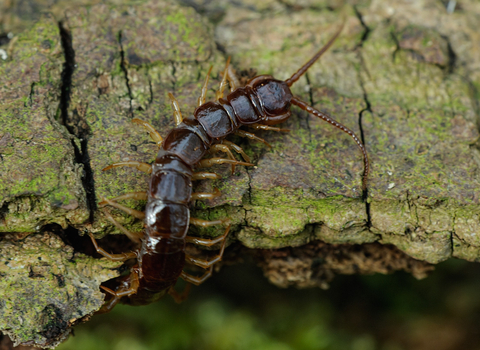
Brown Centipede ©northeastwildlife.co.uk
Brown centipede
A regular in gardens, hunting around compost heaps and under stones, the brown centipede is a common minibeast. Despite its name, it has 15 pairs of legs - one on each segment of its body.
Scientific name
Lithobius forficatusWhen to see
January to DecemberSpecies information
Category
Statistics
Length: 2-3cmCommon.
